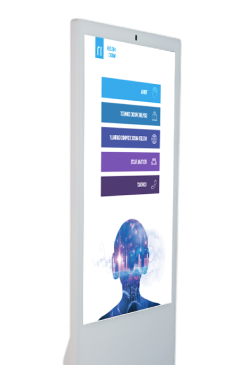

Event Solutions

Our Work

How Should Companies Use Remote Digital Signage?
As remote engagement has become more significant, digital signage has progressed to let establishments expand the reach of their visual and marketing communications.
We’ve known for ages that digital signage is an extremely effective way to connect with folks. Four out of five businesses that use digital signage see an upsurge of up to one-third more sales, particularly in the retail sector. More and more establishments are planning to implement a remote digital signage system or increase one they’ve already been using, including 56% of internal communications specialists in North America.
Marketing messages and announcements seen on digital signs get 400% more views than boring static displays and have an astounding 83% recall rate. Businesses that use remote digital signage as part of their internal communications approach find their employees are 25% more productive and report a fourfold increase in worker engagement. And workers who are recognized on digital signs feel more valued, which results in their being 60% more fruitful than individuals who receive credit through other means. Stats about the efficiency and impact of remote digital signage have been trending up for many years and aren’t expected to break any time soon.
As content management systems have progressed, more and more endpoints have become obtainable. It used to be just displays mounted on walls. Then touchscreens, remote digital signage, and room signs came along to lengthen the reach for visual communications. Now the technology has changed again to let you send messages or playlists to responsive webpages, embed them in intranets, or even push them to enterprise apps like Teams. Some can even send your messages or promotions via email.
These new endpoints, paired with remote digital screens, can all be part of a comprehensive visual communications network that lets you join with more folks in more workspaces – all managed from a single source. By messaging out to folks where they are and the way they desire, you guarantee that everyone’s on the same page and more connected to the business as a whole.
The trick for communicators is that omnichannel thinking lets them truly unite how they communicate. Don’t make an email, and then a marketing message for remote digital signage and then a post for Teams and then another for social media.
Now you can create one action that works on all those platforms and then schedule it to go out to all those various platforms at once. This gives your target audience the option to use the technique they like best, and it also provides support if they see your message in more than one spot.
Think about how remote digital signage transforms the way in which folks interact with your promotions or marketing messaging. For several years now, visual communications have been fluctuating from push-only messages to lively, interactive content.
Instead of just updating people, digital signage has also been joining them to your communications and one another. Everybody sees the brand messages, then some of them talk about it, which drives more folks to look for them and so on. Wayfinding has gone to interactive digital touchscreens and directions can even be sent straight to a person’s phone. QR codes let folks use a web browser to get more data, fill out questionnaires and forms, and so on.
Remote digital signage engagement is all about continuing to inspire these trends and extending them out to employees. It doesn’t matter where they are, they should all be getting the same material and the same chance to interact with your branding communications.